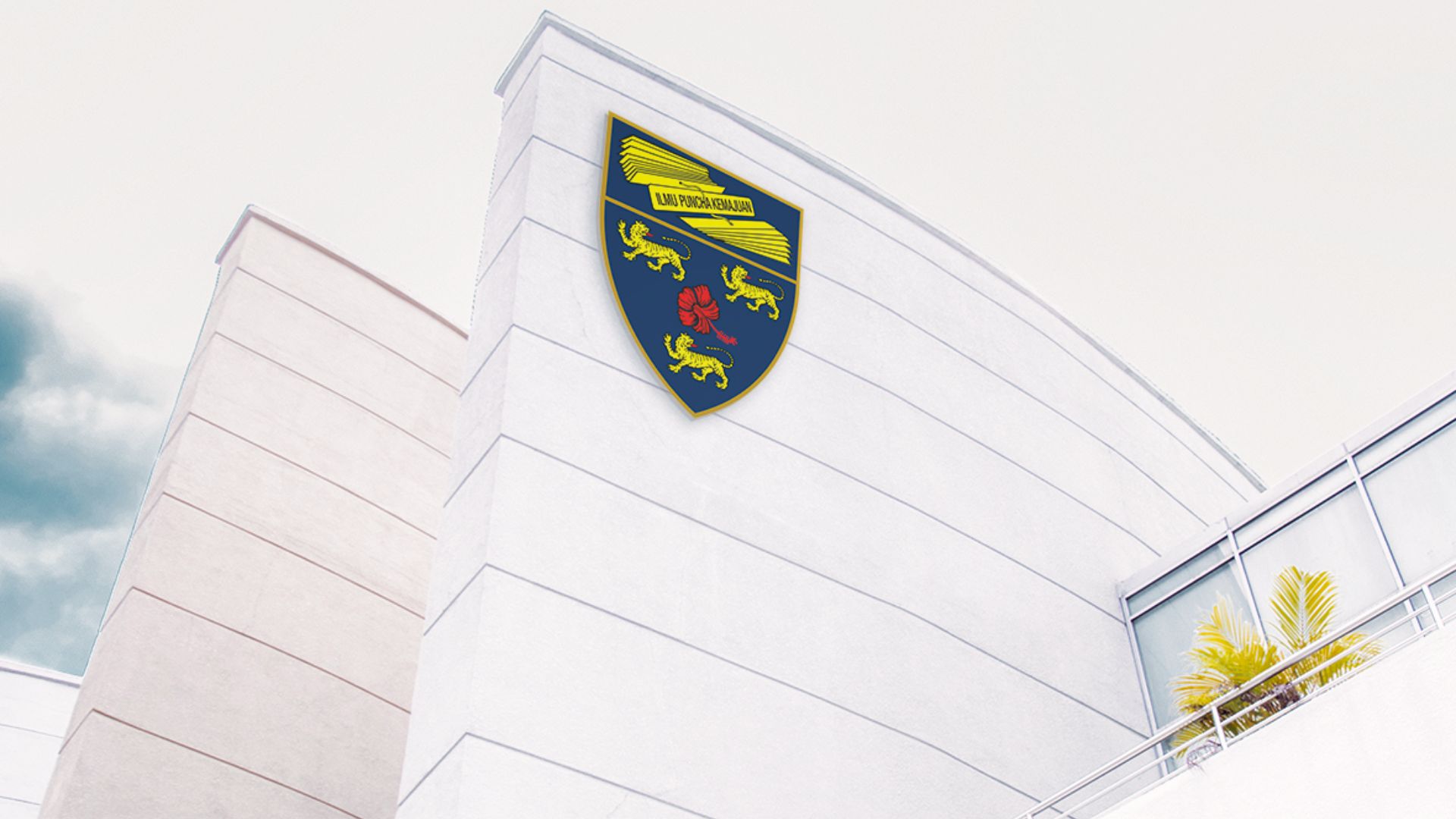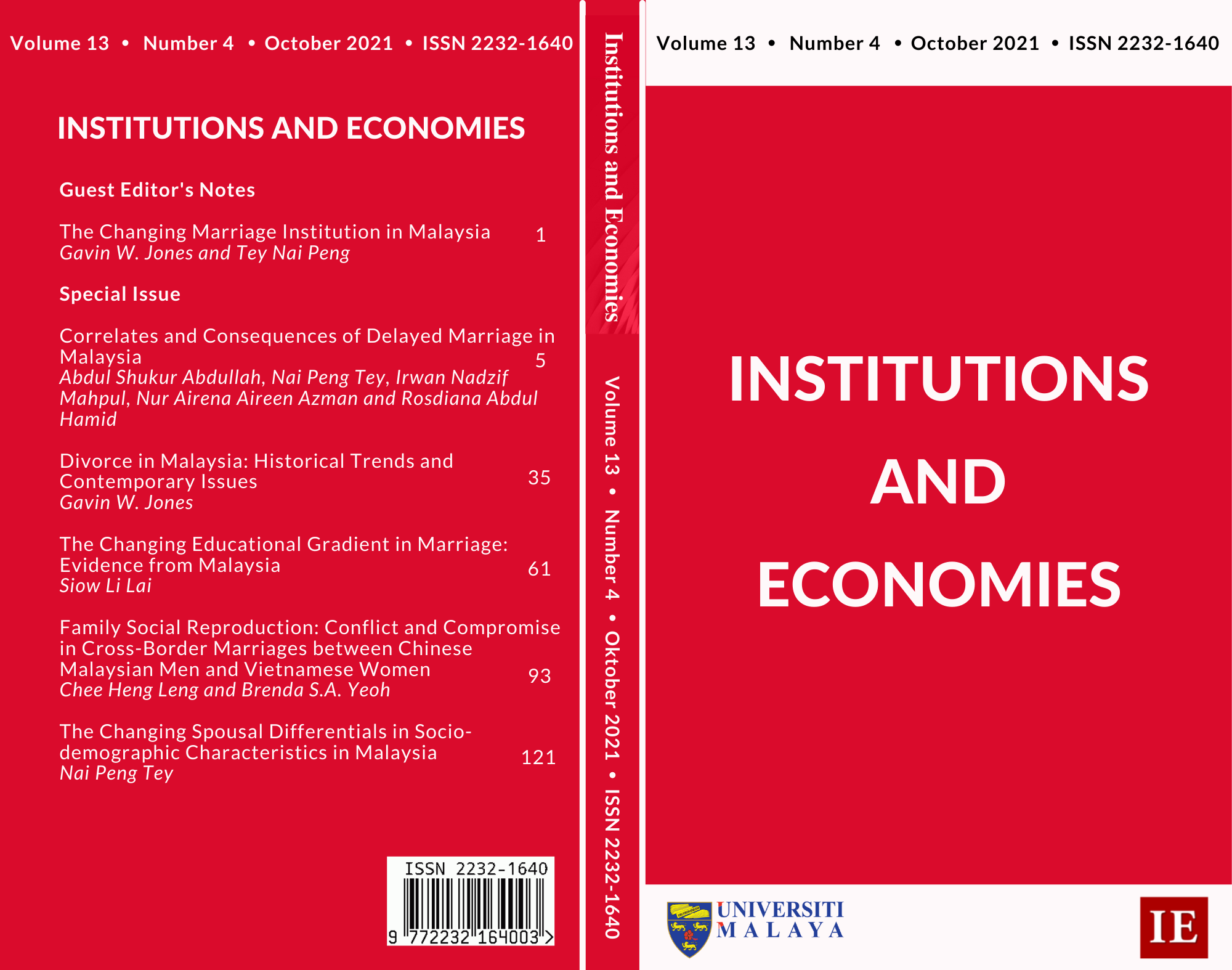The Changing Spousal Differentials in Socio-demographic Characteristics in Malaysia
Main Article Content
Abstract
This paper uses matched couple data from the 1991, 2000, and 2010 population censuses to examine the changes in spousal differentials in age, education, and work status, as well as inter-ethnic and international marriages. The general trend is one of decreasing spousal age and educational gaps between 1991 and 2010. Although older-man younger-woman marriages still predominated, the spousal age gap decreased from 4.6 years to 3.9 years, and the proportion of marriages in which the husband was more than 6 years older than the wife declined from 30% to 24%. Educational homogamy (couples having the same educational level) rose from 53% to 64%, while the proportion of women marrying someone of higher education declined from 33% to 21%. Inter-ethnic marriage hovered around 4.2% throughout the study period, after rising from less than 1% in the 1980s. International marriages made up about 1.2% of all marriages in 2010, up from 0.8% in 1991. The labour force participation rate of married women had increased significantly, resulting in the rise of dual-income households. The changing spousal differentials in socio-demographic characteristics are bound to alter gender roles and relations that will impact Malaysia’s family institution and demographic outcomes.
Downloads
Article Details
Submission of a manuscript implies: that the work described is original, has not been published before (except in the form of an abstract or as part of a published lecture, review, or thesis); that is not under consideration for publication elsewhere; that its publication has been approved by all co-authors, if any, as well as tacitly or explicitly by the responsible authorities at the institution where the work was carried out. Transfer of copyright to the University of Malaya becomes effective if and when the article is accepted for publication. The copyright covers the exclusive right to reproduce and distribute the article, including reprints, translations, photographic reproductions, microform, electronic form (offline and online) or other reproductions of similar nature.
An author may self-archive the English language version of his/her article on his/her own website and his/her institutions repository; however he/she may not use the publishers PDF version which is posted on www.ijie.um.edu.my. Furthermore, the author may only post his/her version, provided acknowledgement is given to the original source of publication and a link must be accompanied by the following text: The original publication is available at www.ijie.um.edu.my.
All articles published in this journal are protected by copyright, which covers the exclusive rights to reproduce and redistribute the article (e.g. as offprint), as well as all translation rights. No material published in this journal may be reproduced photographically or stored on microfilm, in electronic database, video disks, etc., without first obtaining written permission from the publishers. The use of general descriptive names, trade names, trademarks, etc., in this publication, even if not specifically identified, does not imply that these names are not protected by the relevant laws and regulations.
The copyright owners consent does not include copying for general distribution, promotion, new works, or resale. In these cases, specific written permission must first be obtained from the publishers.

